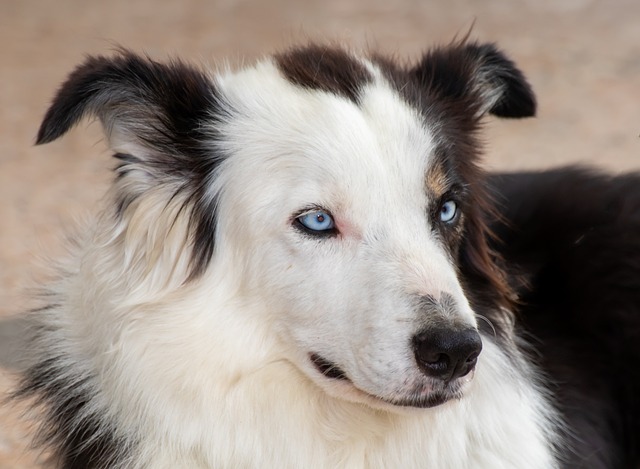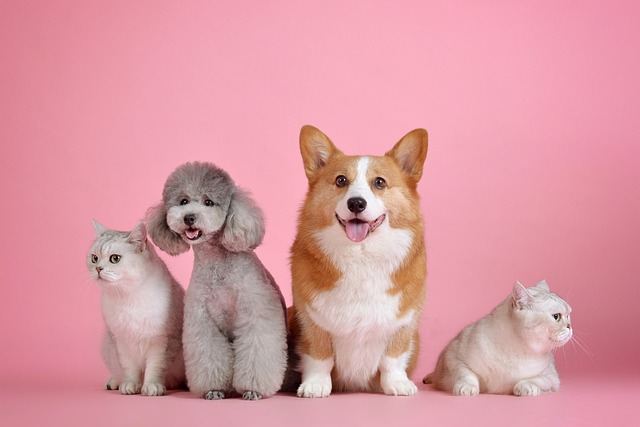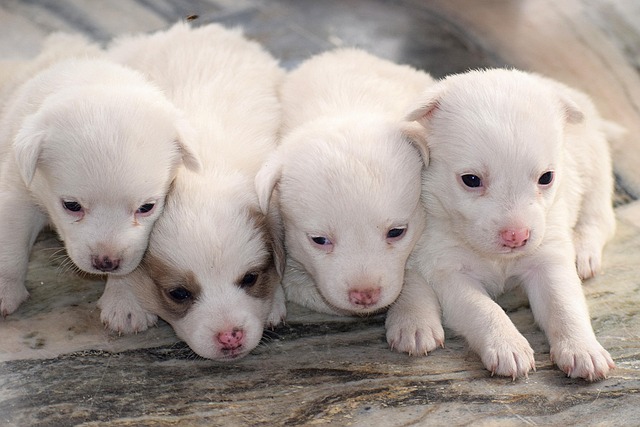
Is standing for a long time harmful to a dog's body
When we see dogs performing on their hind legs in circuses or street entertainers training dogs to stand for prolonged periods to beg,
When we cup a puppy's fluffy face and see those two reddish-brown tear stains at the corners of its eyes, a surge of tenderness always wells up in our hearts. Those marks, shaped like small commas, not only affect our furry friends' appearance but may also be health signals from their bodies. Many owners have tried wiping or using eye drops, only to find the tear stains persist. In fact, the key to improving tear stains often lies in daily food. Understanding the link between diet and tear stains, and nurturing a puppy's eye health with scientific dietary combinations, can unlock this "beautiful worry" from the source.
Puppy tear stains essentially stem from excessive tear secretion or poor drainage, causing iron-containing tears to oxidize and discolor the skin around the eyes. Excessive salt in the diet is a common trigger for tear stains. Dogs metabolize salt far less efficiently than humans. When they ingest too much sodium chloride, the body excretes excess salt by increasing tear secretion, forming stubborn tear stains over time. Some cheap commercial dog foods on the market add excessive salt and seasonings to enhance taste. A Teddy dog long-fed such food usually has more obvious tear stains than its peers. Switching to a low-salt natural diet allows tear secretion to gradually return to normal, indicating that controlling dietary salt is the first step to improve tear stains.
Protein selection also significantly impacts tear stains. Inferior protein sources like feather meal or internal organ scraps not only have low digestibility but may also trigger allergic reactions in dogs. When a puppy is allergic to dietary protein, it may experience eye itching and increased secretions. Frequent scratching and tear accumulation worsen tear stains. A Bichon Frise developed yellow-green eye secretions and more severe tear stains after eating dog food with soybean protein. After switching to a hypoallergenic diet with single-animal protein (such as duck meat), its eye symptoms improved significantly. This reminds us that choosing high-quality, easily digestible protein sources like chicken, fish, or lamb can reduce allergy risks, lighten kidney burden, and fundamentally lower the likelihood of excessive tear secretion.
Antioxidant components in food are secret weapons against tear stains. Antioxidants like vitamin C, vitamin E, and anthocyanins help eliminate free radicals, reduce oxidative damage to eye mucosa, and enhance capillary elasticity, minimizing red blood cell exudation in tears. Fruits rich in natural anthocyanins, such as blueberries and cranberries, can be chopped and mixed into dog food to add flavor and protect eyes. Beta-carotene in carrots converts to vitamin A in the body, vital for maintaining eye mucosal health. Steamed carrot puree is a beloved eye-nourishing supplement for many puppies. These clever combinations of natural ingredients are like a "protective coat" for a puppy's eyes.

The role of dietary fiber in improving tear stains is often overlooked. When a dog's intestinal peristalsis is slow and feces accumulate, toxins in the body affect all organs through blood circulation, including the secretion function of eye glands. Fiber-rich foods like pumpkin, broccoli, and oats promote the growth of beneficial intestinal bacteria and help eliminate toxins. A long-constipated Pomeranian often has severe tear stains, but adding pumpkin and psyllium husk to the diet helps fade tear stains as bowel movements become smooth. This reflects the internal link of "intestinal health = eye health," with dietary fiber acting as the intestine's "scavenger," indirectly protecting a puppy's eye cleanliness.
Adequate water intake is also closely related to tear stains. Dry dog food without sufficient water supplementation can concentrate urine and increase internal heat, leading to more tear secretion. For breeds prone to tear stains, such as Shih Tzus and Maltese, besides providing wet food or adding warm water to dry food, feed fresh, high-water-content ingredients like cucumbers and winter melons. Observations show that puppies with sufficient daily water intake have lower tear viscosity, making eye crusting and discoloration less likely. Preparing a clean automatic water dispenser for puppies to access fresh water at any time is a small detail for eye health.
When selecting tear-stain-reducing foods for puppies, individual differences must also be considered. Each dog has a unique constitution and reacts differently to food. Some puppies may be sensitive to duck meat, while others may not adapt to fish. Owners can keep a dietary diary to observe tear stain changes after feeding certain foods, identifying the most suitable ingredient combinations for their furry friends. When we gently brush over a puppy's fading tear stains and see its eyes regain clarity, we realize food is not just energy for satiety but a medium for conveying care.
Those wet eyes shining in the sun are the window through which puppies communicate with us. Dispelling the shadow of tear stains with scientific diets, ensuring every gaze is filled with pure tenderness, is not only about protecting their appearance but also a solemn promise to their health. When we integrate love for puppies into every meal choice, those once-troubling tear stains will gradually fade under careful care, leaving behind the carefree smiles of our furry friends and warmth in our hearts.

When we see dogs performing on their hind legs in circuses or street entertainers training dogs to stand for prolonged periods to beg,

When we prepare to greet the dog's warm greeting as usual, we find that the once bright and clear eyes have become red and swollen, and the dog keeps scratching with its claws, with a look of discomfort and helplessness in its eyes.

When you notice your beloved dog constantly scratching, biting itself, or see its once-smooth coat becoming red, swollen,

When you see your beloved dog constantly scratching or notice suspicious black specks in its smooth fur, it’s natural to feel concerned. Parasites are a common health issue for dogs,

When we look into the eyes of dogs, the originally bright and clear eyes suddenly show distressing red bloodshot, and even become swollen and secrete more.

At the moment when the door closes, there comes the heart wrenching barking of dogs inside the house, or when they come home and see a chewed sofa and scattered slippers,